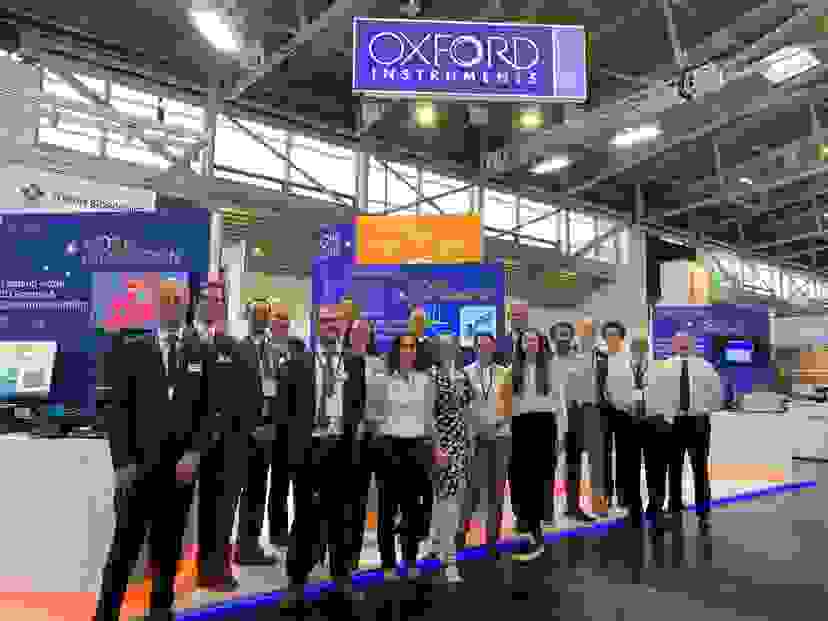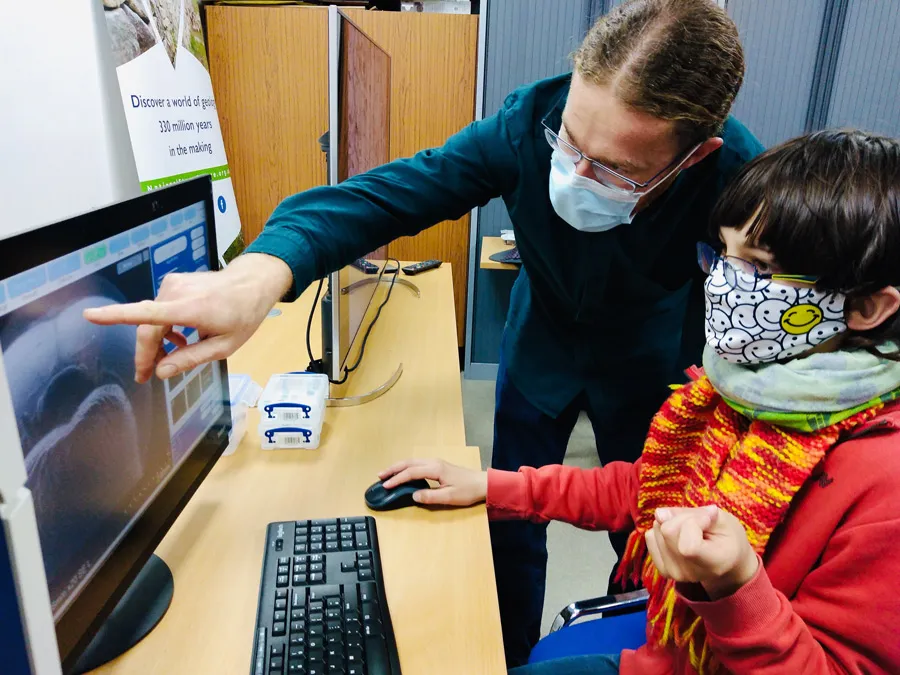So as has become a comforting norm, we wanted to take an opportunity to look back over points in the year just past that have stood out to us. This might be because they were rewarding or different, or even because they were reassuringly the same.
Much-missed live events
One example of the latter is the return of events in person. Much of the world has opened up significantly through 2022, and this was the first time since I joined Oxford Instruments that we have been able to attend industry events like Analytica and M&M face-to-face. In many respects, it felt like a return to business as usual. However, many I spoke to commented on the energy and engagement among delegates and exhibitors alike. It was clear that, for those attending, it provided a much-missed opportunity to meet up with peers and old to catch up old acquaintances as well as make new connections.

Oxford Instruments team at Analytica 2022, Munich
MacRobert Award Finalist
In May, we were informed we had been shortlisted for the 2022 MacRobert Award by the Royal Academy of Engineering for our Symmetry EBSD detector. Being shortlisted was tremendous recognition of the technological breakthrough that enabled the development of Symmetry. The awards process was a fabulous opportunity to remind ourselves of the excellence of the work that was undertaken. It was also a great chance to reflect on how much further the technology for Symmetry 3 (see later) has come in those few short years since Symmetry was originally launched.
It also resulted in our Iain Anderson, product marketing director, being interviewed … King show on Sky News, which while a daunting prospect, was terrific fun, and the results can be seen here.
Symmetry S3
The launch of Symmetry S3 represented a major technology landmark of the year for Oxford Instruments. Symmetry was ground-breaking when it was launched, and Oxford Instruments has continued to develop the technology. Now offering acquisition speeds in excess of >5700 pps with no compromise on sensitivity, Symmetry S3 delivers routine high-speed analysis on all sample types and excellent data from beam-sensitive materials.
Combining the speed of CMOS with unique fibre optics, proximity sensing and a software-controlled tilting interface makes the S3 detector the most versatile and powerful on the market. Symmetry S3 is driven by the power and simplicity of the AZtecHKL data acquisition software and completed by AZtecCrystal, the most modern EBSD data processing platform available, developed to cope with the large datasets generated by CMOS EBSD.
STEM Outreach
Possibly the project we have been proudest to be involved with this year was a STEM outreach project which has been giving schoolchildren the chance to use high-level scientific instruments to carry out their own experiments.
As part of the Hitachi High-Tech America Inspire STEM Education Outreach Programme in the UK Oxford Instruments, contributed an AZtecLive One Xplore energy dispersive X-ray system (EDS).
The project was originally proposed by Dr Alex Ball of the Natural History Museum (NHM), London, and Dr James Perkins of Queen Elizabeth Grammar School in Kent. The programme is designed to give the students taking part in an in-depth experience of STEM research and to instil in them an interest in STEM by allowing them direct access to real scientific instrumentation.
Portable Hitachi TM4000 SEMs were provided to the participating schools for use in scientific demonstrations and experiments, and teacher training was delivered to allow staff to train students and carry out maintenance onto which an AZtecLive One Xplore energy dispersive X-ray system (EDS) was installed.

Student getting hands-on experience of the SEM at workshops held at the National Stone Centre. Credit Kate Bellis
The project was piloted in 2021 and continued through 2022. Over 7000 students from over 80 schools have taken part in the programme.
Now for 2023
So, 2022 has been another good year for us at Oxford Instrument. As 2023 begins, we hope that the threats of COVID continue to diminish for you.
We will continue to develop new technologies as well as find other ways to support those looking to push back the boundaries of materials characterisation and nanoanalysis.



